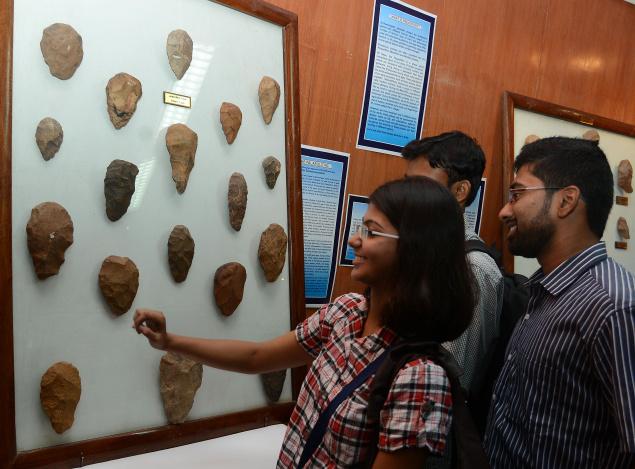
At the centre of the centenary exhibition hall at the Government Museum in Egmore, lie two closely-guarded Palaeolithic tools — one a hand axe from Pallavaram and another, a cleaver from Attirampakkam.
On May 30, 1863, exactly 150 years ago, renowned geologist Robert Bruce Foote picked up the hand axe from the “debris on the Brigade Ground at Pallavaram near Madras”.
The museum, in collaboration with Sharma Centre for Heritage Education is commemorating the momentous discovery by organising a special exhibition of Foote’s collection of stone tools. R.B. Foote sold the tools to the museum in 1904 for Rs. 40,000, said R. Kannan, secretary, tourism, culture and religious endowments department.
Over 75 tools have been put on display, said, anthropology gallery curator, Thulasi Brinda. “They are from places such as Mysore and Baroda among others. This is also the first time we have displayed a painting of Robert Bruce Foote,” she said.
M.L.K. Murty, Tagore National Fellow, Archaeological Survey of India, who delivered the first Robert Bruce Foote Memorial Lecture on the occasion, spoke about how Foote, who was a geologist at Madras Presidency, was inspired by the recognition given to stone tools discovered in Europe, to make his findings.
Shanti Pappu, founder secretary and Kumar Akhilesh, director-projects of the Sharma Centre, have been studying the prehistoric site of Attirampakkam, one of the sites discovered by Foote, since 1999. Dr. Akhilesh said they had conducted excavations until 2005, and have been studying the stone tools since then.
Ms. Pappu, said that while a lot of emphasis was given to sculptures and monuments in the country, there was not much interest in stone tools. “We want to cultivate fresh interest in stone tools, which are extremely important,” she said.
She said villagers of these sites were the true custodians of this heritage.
“When we are not present, they guard the site and have enormous knowledge about the past environment,” she said. Citing funding and manpower shortage as the two key challenges in the country, she said though the government is supportive in terms of granting licences and permits, there is also a need for public-private partnerships. “If you look at countries such as Israel, every five kilometres someone is working on a pre-historic site. We need that kind of initiative in India.”
While the museum is conducting a one-month course on caring for museum objects, the Sharma centre is marking this 150 year by holding a five-day workshop on Robert Bruce Foote.
Vaigai Chelvan, minister for school education, sports and youth welfare inaugurated the exhibition, which covers pre-historic cultures, the environment they lived in, methods used in the excavation and the significance of the discoveries, among other topics. The exhibition will be on until June 5.
source: http://www.thehindu.com / The Hindu / Home> News> Cities> Chennai / by Staff Reporter / Chennai – May 31st, 2013